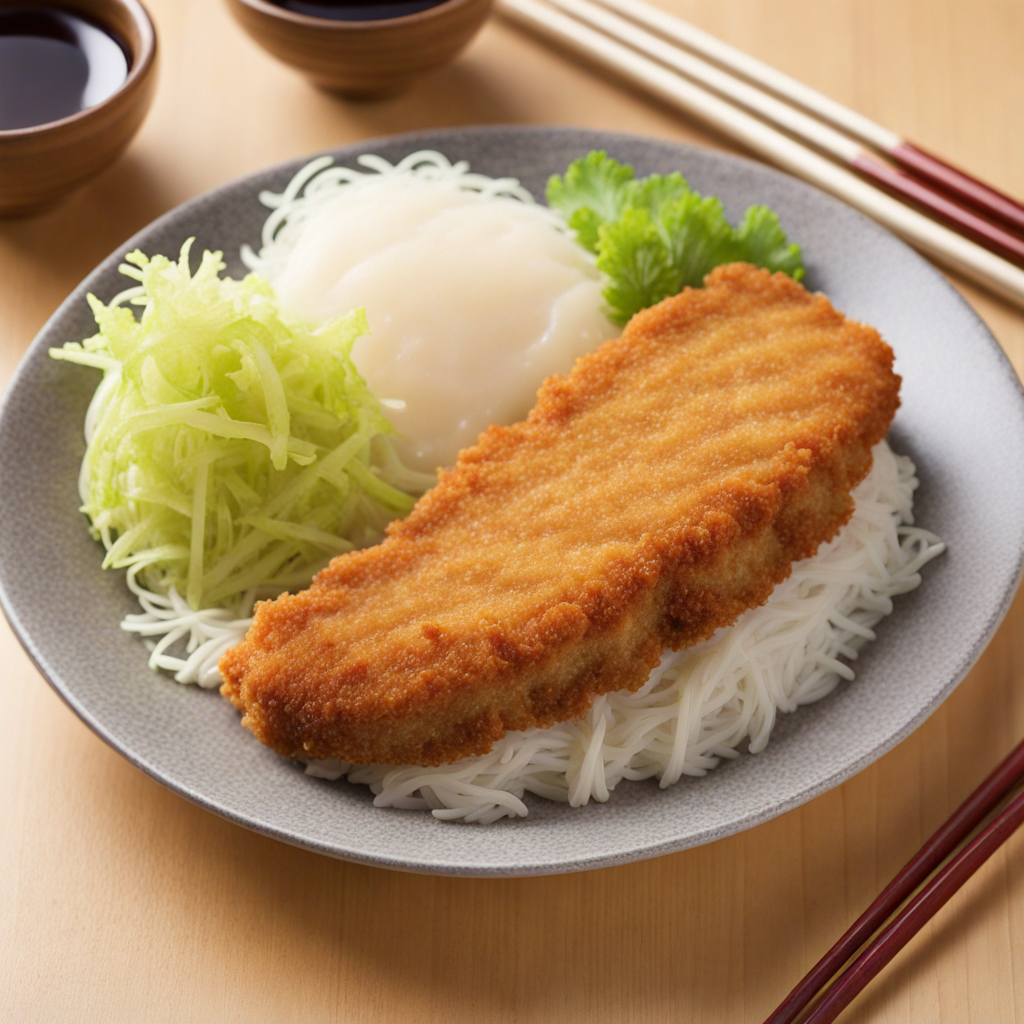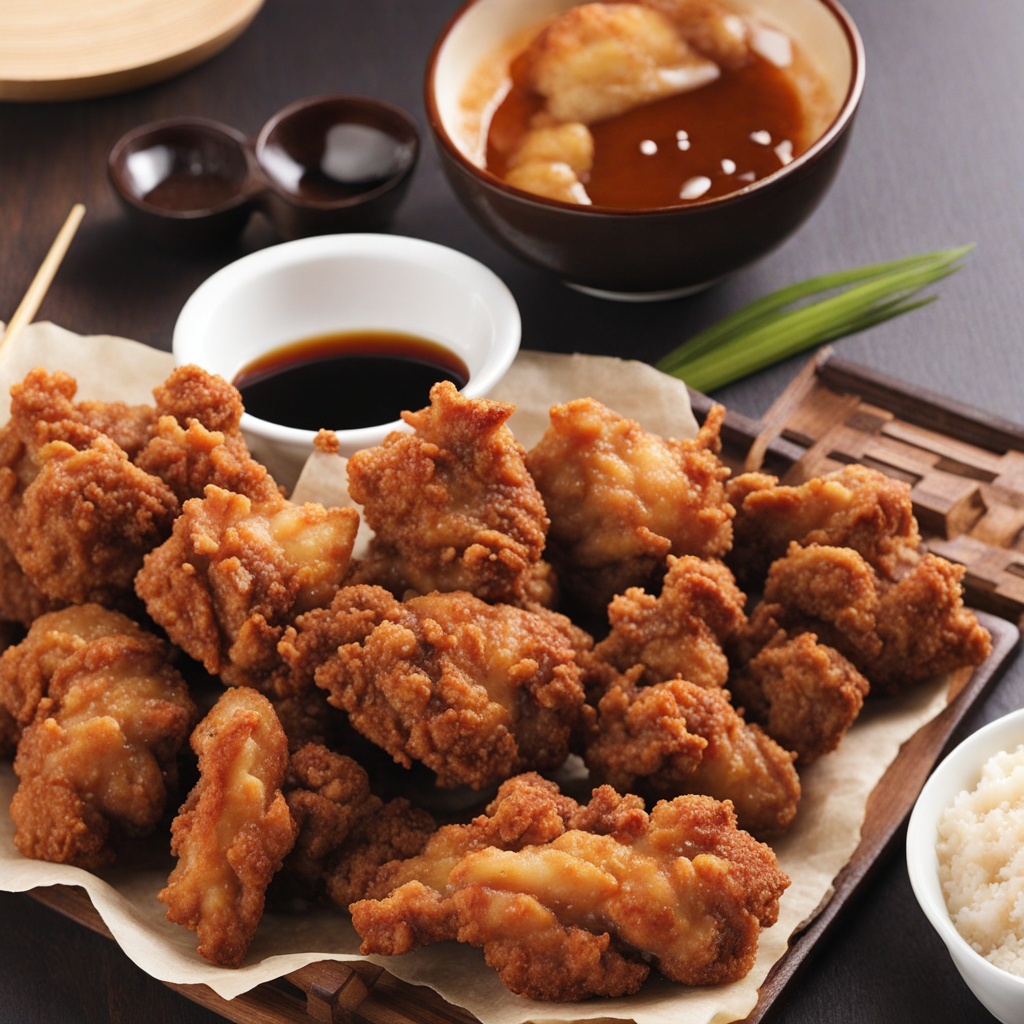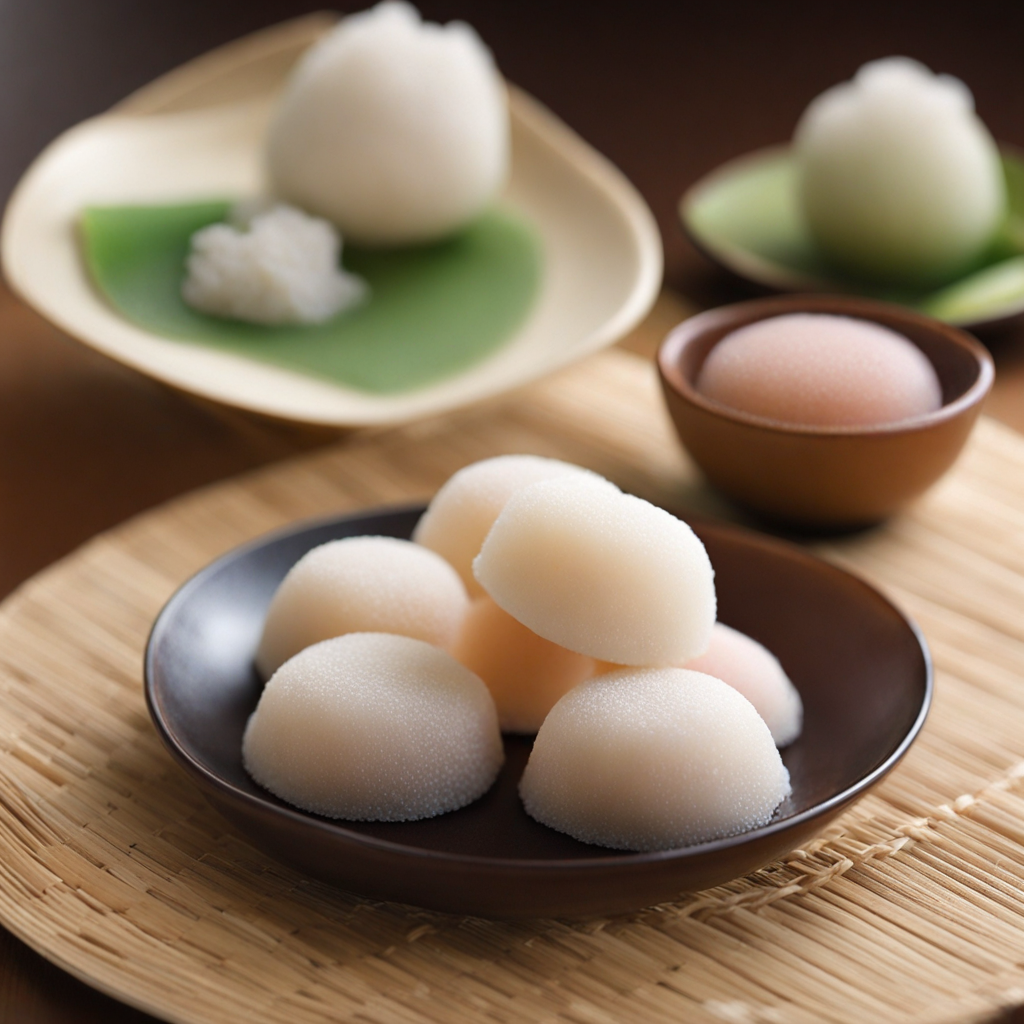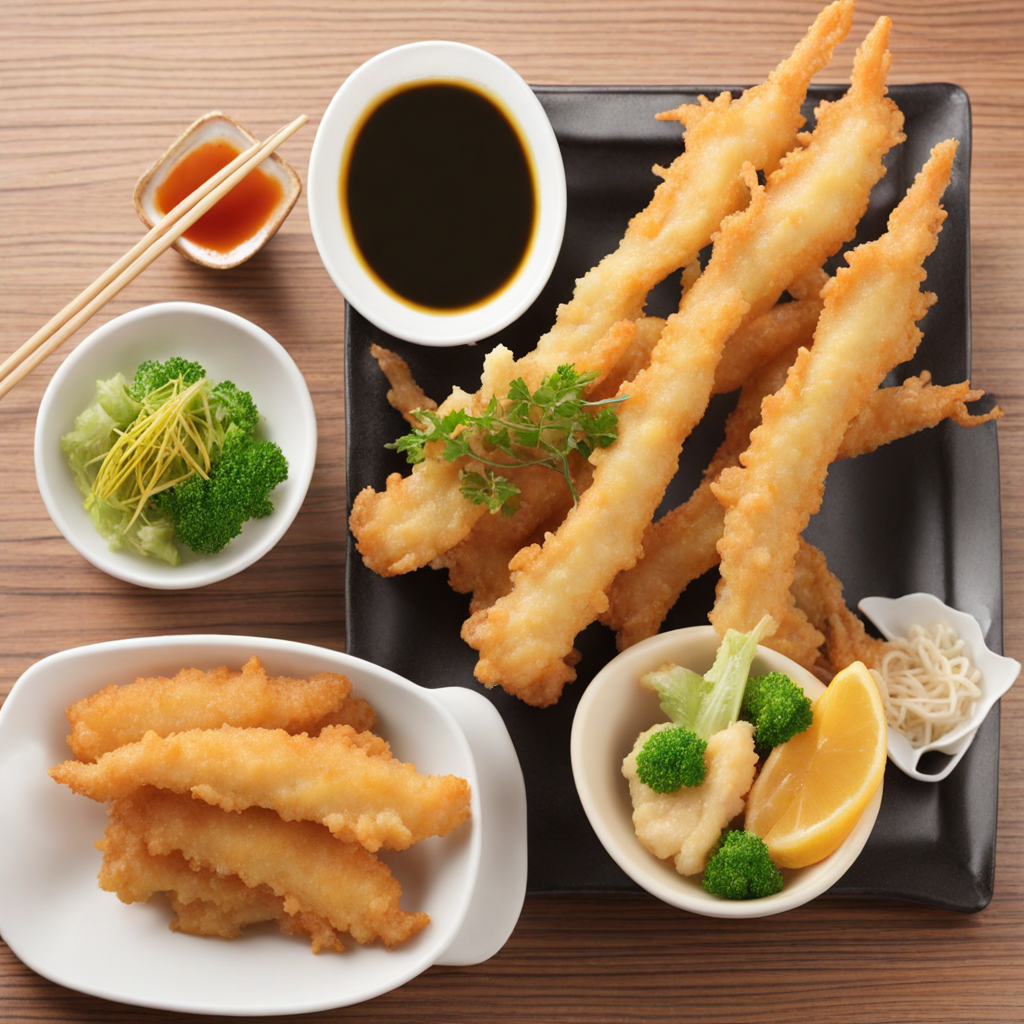Tonkatsu
Tonkatsu is a popular Japanese dish that features a succulent pork cutlet, typically made from either pork loin or pork tenderloin, which is coated in panko breadcrumbs and deep-fried to a golden brown perfection. The dish is celebrated for its contrasting textures; the crispy exterior provides a satisfying crunch, while the tender, juicy pork inside offers a rich, savory flavor. Tonkatsu is often served with a tangy tonkatsu sauce, which is a thick, sweet-sour condiment similar to Worcestershire sauce, enhancing the dish with its complex umami notes. Served alongside the cutlet are frequently shredded cabbage, which adds a refreshing crunch and acts as a palate cleanser, and a bowl of steamed rice, making for a balanced meal. Some variations of tonkatsu include the addition of a fried egg on top or serving it with curry sauce, offering a different taste experience while still highlighting the main feature of the crispy pork. The dish is typically garnished with lemon wedges and sometimes a sprinkle of sesame seeds, giving it a vibrant appearance. Tonkatsu is not just a dish; it's a culinary experience that reflects the meticulous nature of Japanese cooking. The process of preparing tonkatsu involves careful attention to detail, from selecting high-quality pork to the artful breading technique that ensures an even coating. This dish is not only a staple in Japanese cuisine but is also enjoyed worldwide, making it a must-try for anyone looking to explore new flavors and textures.
How It Became This Dish
Origin of Tonkatsu Tonkatsu, a beloved Japanese dish consisting of breaded and deep-fried pork cutlet, has its roots in the late 19th century during the Meiji Restoration. This period marked a significant shift in Japan's cultural landscape as the country opened its doors to Western influences. The introduction of Western cuisine led to the birth of several hybrid dishes, one of which was katsu, derived from the English word "cutlet." Initially, katsu was made with beef or chicken, but pork soon became the preferred meat, most likely due to its affordability and the growing popularity of pig farming in Japan. In terms of specific origins, the first recorded instance of tonkatsu is often attributed to a restaurant called "Hiroko," which opened in Tokyo in 1899. However, it wasn’t until the early 20th century that tonkatsu began to gain widespread popularity as a staple in Japanese cuisine. This dish not only reflected the culinary adaptation of Western techniques but also showcased Japan's ability to embrace and rework foreign influences into something uniquely Japanese. Cultural Significance Tonkatsu is more than just a dish; it encapsulates a significant part of Japan's cultural identity. As Japan moved into the post-World War II era, economic growth and urbanization led to a shift in dietary habits. Tonkatsu emerged as a comfort food that resonated with the Japanese people, symbolizing prosperity and the good life. It became a popular meal among the middle class, often served with a side of shredded cabbage, rice, and miso soup, making it a well-rounded meal that appealed to families. Moreover, tonkatsu is a dish that embodies the concept of "shokuyoku," or the appetite for food and life. It is often associated with celebrations and special occasions, such as family gatherings or festivals, where the act of preparing and sharing food fosters a sense of community. The crunchy texture of the breading and the juicy tenderness of the pork create an inviting experience that captivates both domestic and international diners. Development Over Time As the years passed, tonkatsu underwent various adaptations and innovations. In the post-war period, with increased availability of ingredients and the rise of consumer culture, tonkatsu restaurants proliferated across Japan. The dish became more accessible, leading to the establishment of specialized tonkatsu eateries, each with its unique take on the recipe. Some restaurants began offering premium cuts of pork, such as “Kurobuta” (Berkshire pork), known for its rich flavor and marbling. In the 1970s and 1980s, tonkatsu experienced a renaissance of sorts, as chefs started experimenting with different flavors and accompaniments. The introduction of sauces, particularly tonkatsu sauce—a savory and slightly sweet condiment made from fruits and vegetables—became an essential element of the dish. This sauce enhanced the flavor profile of tonkatsu, making it even more appealing to diners. Regional variations also emerged, showcasing local ingredients and culinary traditions. For instance, in Nagoya, a style known as "hitsumabushi" features grilled eel served with rice, while the Hiroshima version includes a layer of shredded cabbage and a special sauce. These variations reflect the local culture and preferences, which contribute to the rich tapestry of tonkatsu as a dish. Modern Popularity In contemporary Japan, tonkatsu remains a popular choice, not only in traditional eateries but also in fast-food chains and convenience stores. The dish has transcended its local roots and gained international acclaim, becoming a representative of Japanese cuisine worldwide. With the rise of globalization and culinary tourism, many foreign diners have been introduced to tonkatsu, often finding it to be an accessible entry point into the diverse world of Japanese food. Additionally, tonkatsu has inspired fusion cuisine, leading to innovative interpretations by chefs both in Japan and abroad. Variants such as tonkatsu sandwiches (katsu sando) have become trendy, especially among younger generations. The sandwich, typically made with fluffy white bread and a generous serving of tonkatsu, has gained popularity in urban areas, often served in stylish cafés. The appeal of tonkatsu can also be attributed to its versatility. It can be enjoyed as a standalone dish, served with rice and miso soup, or incorporated into other formats, such as curry (katsu curry) or salad. This adaptability ensures that tonkatsu continues to evolve while remaining true to its roots. Conclusion In summary, tonkatsu is more than just a crispy pork cutlet; it is a culinary embodiment of Japan's historical evolution, cultural identity, and contemporary dining trends. From its origins in the Meiji era to its status as a beloved comfort food, tonkatsu reflects the resilience and creativity of Japanese cuisine. Its ability to adapt and thrive in a global culinary landscape speaks volumes about its enduring appeal and significance in Japanese culture. As diners continue to explore the rich flavors and textures of tonkatsu, it remains a cherished dish that bridges the past and present, inviting all to savor its delicious legacy.
You may like
Discover local flavors from Japan







